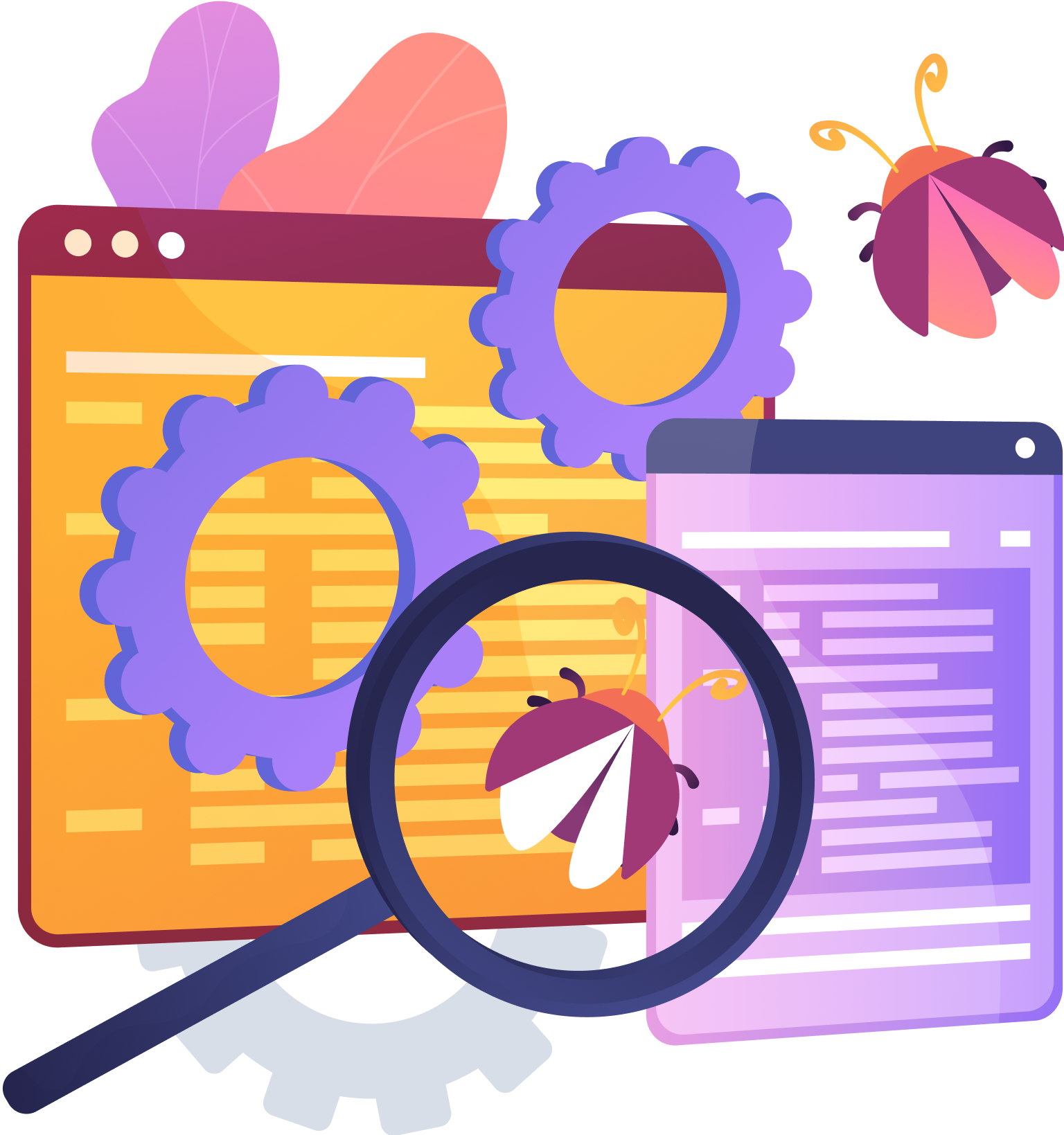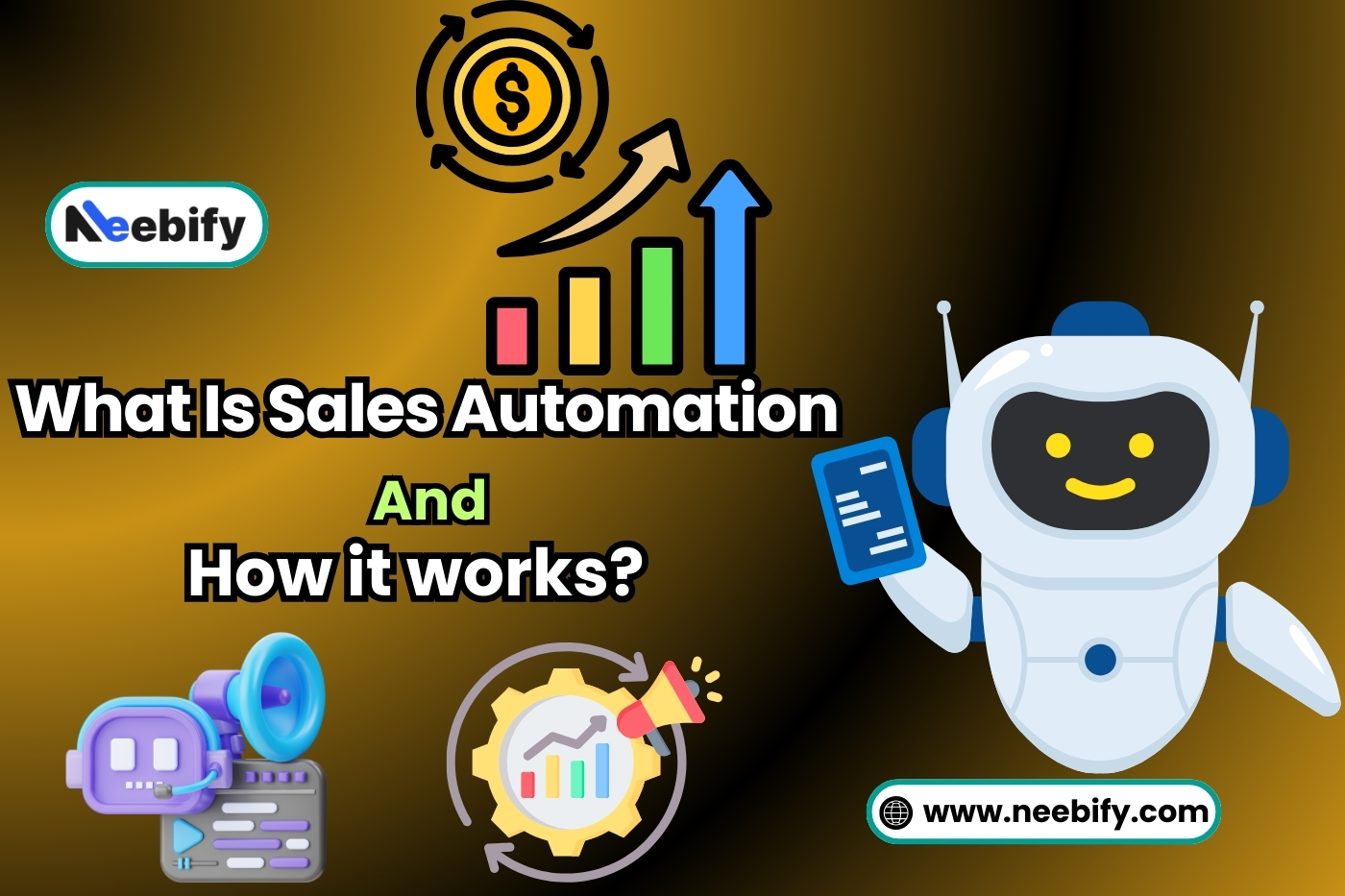Development of CMS Calander Solution For Web Management

In the swiftly changing digital terrain, companies always look for novel approaches to handle and utilize their information efficiently. The Content Management System is one such system that has become extremely popular (CMS). Thanks to its wide range of uses and functionalities, CMS has emerged as a key component for companies looking to optimize their processes for creating, managing, and distributing information. We'll dive deep into the world of CMS in this extensive guide, covering its many kinds, technologies, functionalities, and advantages in addition to answering frequently asked questions and dispelling common myths.
Understanding The Development of Content Management Systems
Development of content Management Systems includes designing and modifying software systems to simplify the management and distribution of digital information. These systems are painstakingly crafted to satisfy various needs, from simple website management to complex enterprise content orchestration. CMS creation guarantees smooth publication and content management procedures through complex engineering, giving users effective tools to organize, edit, and share digital assets easily. Content Management System (CMS) systems offer an adjustable framework that can be tailored to meet a variety of purposes, from running a personal blog to organizing extensive corporate content workflows. This can ultimately lead to increased productivity and more seamless content operations.
Let's Examine A Few of The Popular CMS Types
System For Component Content Management (CCMS)
Technical documentation and product catalogue are the perfect applications for CCMS, especially for managing modular content components. The granular content organization makes it simple to reuse and customize, which boosts productivity and consistency in the processes involved in creating and maintaining material. With the help of CCMS, users can effectively manage complicated content structures, which facilitates simplified workflows and improves the calibre and precision of product information and technical documentation.
Management of Enterprise Content (ECM)
ECM manages and arranges content assets across the entire organization to maximize knowledge management, compliance, and cooperation. It offers powerful capabilities for gathering, arranging, storing, and retrieving many kinds of material, guaranteeing easy access and effective use of vital corporate data.
Headless Content Management System (Headless CMS)
Headless CMS provides unmatched flexibility for omnichannel content distribution by severing the connection between the frontend presentation layer and the content management backend. Content development and management are separated from content presentation by Headless CMS, enabling developers to distribute content easily across several digital platforms and devices. This architecture is a great option for businesses looking to provide their audience with dynamic and tailored content experiences because it allows for quick development, content reuse, and improved scalability.
Web Content Management System (WCMS)
With its user-friendly interfaces designed for non-technical users, WCMS is mostly used for the development and management of websites. Material creators don't need to be very technical to author, modify, and publish web material, thanks to WCMS. With the help of WCMS systems, which often offer a variety of features, including WYSIWYG editors, templates, and workflow management tools, businesses can effectively maintain dynamic and interesting websites. Through engaging digital experiences, WCMS enables businesses to improve their online presence, draw in customers, and increase engagement.
Personalization Management System
Delivering tailored content experiences based on user behaviour and preferences is made possible by PMS. PMS platforms maximize engagement and conversion rates by dynamically tailoring content recommendations, offers, and interactions to individual users using data analytic and user profiling. By enabling businesses to distribute pertinent and focused content through various platforms, PMS helps them build stronger relationships with their audience and increase client happiness and loyalty.
System for Managing Documents
A document management system's primary function is organizing, storing, and retrieving documents, improving efficiency and adhering to regulations. It ensures safe and efficient document workflows with its powerful features for document capture, indexing, versioning, and access control. DMS platforms make it easier for teams to collaborate, share documents, and automate workflows. This helps businesses streamline document-centric processes and comply with legal requirements and industry best practices.
Learning Management System (LMS)
Online course and training program creation, management, and delivery are all covered by LMS. It offers a consolidated platform for learner management, assessment, content management, and course creation. With features like certifications, quizzes, progress tracking, and course enrollment, LMS platforms let businesses provide their staff, clients, and partners with productive and interesting learning experiences. Through ongoing learning and development activities, LMS enables firms to improve performance, increase the capabilities of their personnel, and spur corporate expansion.
Knowledge Management System
A knowledge management system facilitates the gathering, archiving, and disseminating corporate knowledge to support creativity and judgment. Employees may easily access pertinent knowledge and skills thanks to the procedures and resources it offers for knowledge generation, organization, retrieval, and distribution. Knowledge management systems (KMS) enable businesses to use their collective knowledge assets to drive innovation, solve challenges, and make well-informed decisions. They do this by facilitating information exchange, collaboration, and continual learning.
Intranet And Portal CMS
Intranet and portal content management systems make organizational internal communication, cooperation, and information sharing easier. It gives staff members a single location to access company resources, news, policies, and papers. Organizations may cultivate a connected and engaged workforce by utilizing features like document libraries, user profiles, discussion forums, and task management tools provided by intranet and portal CMS platforms. Organizations may increase employee engagement, optimize business operations, and improve internal communication using intranet and portal CMS.
Social And Community CMS
With social features and user-generated content, community and social content management systems enable organizations to create and foster communities. It offers resources for setting up blogs, social networking sites, online communities, and discussion forums. This helps businesses build relationships, lead conversations, and solicit suggestions and comments from many people. With features like user profiles, activity feeds, commenting, and moderating tools, community and social content management systems (CMS) enable businesses to build lively, active online communities centred around their goods, brands, or interests.
Systems For Managing Digital Assets (DAM) And Media
Digital asset management and storage, including photos, videos, and documents, is centralized with the DAM system. It offers strong functionality for asset ingestion, metadata management, search and retrieval, and dissemination. DAM platforms streamline the processes of content production, collaboration, and publishing by enabling the effective organizing, versioning, and sharing of digital assets across teams and departments. DAM enables businesses to streamline content creation and delivery workflows, improve brand consistency, and extract the most value from their digital assets.
Technologies Advancing The Development of CMS
Languages Used In Programming
In Content Management Systems, PHP, Python, and JavaScript (Node.js) are frequently used for backend development. While Python wins in readability and versatility, Node.js offers event-driven architecture ideal for real-time applications, and PHP leads in simplicity and compatibility. Because each language is scalable and flexible, developers may create dynamic, effective CMS solutions that meet various needs and tastes.
Databases
Popular options for storing and managing content and information in content management systems are MySQL, PostgreSQL, and MongoDB. PostgreSQL is known for its extensive feature set and extensibility, while MongoDB provides flexibility and scalability with its NoSQL document-oriented database style. MySQL is known for its dependability and performance. These databases offer effective data retrieval and storage, which is necessary to fuel contemporary content management systems and guarantee smooth workflows for content management.
Frameworks
Angular, React, Django, and Laravel are strong bases for building feature-rich and scalable content management systems. Elegant MVC architecture and extensive toolkits are provided by Laravel and Django, enabling quick creation and maintainability. Conversely, component-based designs and reactive user interfaces offered by React and Angular allow for dynamic and interactive content experiences. These frameworks enable programmers to create cutting-edge, high-performing content management systems (CMS) that satisfy changing user needs and industry norms.
What Is The Process of A Content Management ?
Content Creation
With the CMS's user-friendly interfaces, users may produce a variety of content kinds, including documents, photos, videos, blog entries, and articles. Material producers don't need to be technical to input text, upload media files, and format material.
Content Arrangement
The CMS makes it simple for users to find and manage material by organizing it into structured formats like categories, tags, or folders. This form of arrangement aids in preserving coherence and consistency throughout the application or website.
Content Storage
The CMS maintains a file system or database where all produced content and related information are safely kept. As the amount of content increases, this storage method ensures it is always available and retrievable.
Content Management
Within the CMS, users with the necessary authorization can alter, update, or remove pre-existing content. Users may work together on content creation and editing projects, keep track of changes, and roll back to earlier versions thanks to version control tools.
Content Publishing
Using the CMS interface, users may post finished content straight to the channels of their choice, including websites, mobile applications, and social media sites. To expedite the distribution of material, publication workflows may incorporate automated publishing chores, scheduling choices, and review procedures.
Content Presentation
By storing content independently of its layout or visual representation, the CMS distinguishes between content and presentation. This makes it possible to show content flexibly across various platforms, screen sizes, and devices while maintaining an optimal and consistent user experience.
User Access Control
CMS platforms usually provide role-based access control techniques to govern user permissions and security settings. Administrators can restrict access to important features or content by assigning users specific roles and permissions based on their responsibilities.
Integration
Third-party products and services, including e-commerce platforms, email marketing software, analytics tools, and customer relationship management (CRM) systems, are frequently integrated with content management systems (CMS). The CMS's capability is increased through these connectors, and smooth data interchange and workflow automation are made possible.
Customization
Plugins, themes, and APIs (Application Programming Interfaces) provide extensibility and customization on advanced content management systems. Users can improve the CMS's functionality by adding custom themes to comply with branding guidelines or installing plugins for more capabilities.
Extensions and Plugins
easily accessible to improve functionality without requiring significant development work. These plugins address various topics, including analytics, e-commerce, security, and SEO, allowing companies to tailor their websites and applications to their requirements and objectives. Using these plugins ensures smooth integration and compatibility within the CMS environment while saving time and money.
Low Service Cost
Businesses can reduce the need for manual updates and maintenance chores by streamlining content management workflows with the help of a content management system. Version control, security patching, and content publication are all automated procedures that reduce downtime and operational interruptions and save much money over time. This makes it possible for companies to devote resources to growth and strategic goals rather than rote maintenance duties.
No Need For Developers
With the help of content management systems' user-friendly interfaces made for non-technical users, content management tasks can be completed without always depending on engineers. Material makers don't need to be highly technical or know a lot of coding to author, edit, and publish material because of the accessibility of editing tools and visual interfaces. This enables companies to continue being flexible and quick with campaigns and content upgrades without waiting for IT support.
Complete Content Control
Granular control over content governance regulations is available to administrators within a content management system, guaranteeing uniformity and compliance across all digital platforms. Administrators can enforce content standards and legal requirements by defining user roles, access levels, and approval workflows through role-based access control and permission settings. This centralized control improves overall content quality and integrity throughout the company, reduces risks, and guarantees brand consistency.
Improve Customer Services
Businesses may provide their audience with personalized content experiences with Content Management Systems, which increase consumer happiness and engagement. Businesses can dynamically modify content recommendations, offers, and interactions by utilizing user data, behaviour analytics, and segmentation methods to match individual interests and needs. This customized strategy strengthens client relationships, boosts consumer loyalty, and encourages repeat business and referrals.
Manage SEO Effectively
Content management systems come with built-in SEO tools and capabilities to optimize content for search engines and increase organic traffic and visibility. Content management systems (CMS) offer vital tools for improving website discoverability and ranking on search engine results pages (SERPs), including metadata optimization, URL structure management, and sitemap preparation. To enhance their online presence and increase targeted traffic, businesses should apply best practices in content strategy, keyword targeting, and on-page SEO.
Key Features of Content Management Software
Content Creation And Storage
Content management software provides users with user-friendly editors and strong storage capabilities, making creating and organizing various kinds of content easier. Users' ability to effectively produce, edit, and store content ensures easy access to and administration of digital assets within the system.
CMS Administration
Analytics dashboards, workflow management, and role-based access control are features of content management software that help administrators manage content operations. Using robust analytics tools, administrators may analyze content workflows, set user roles, issue permissions, and learn more about the success of their content.
Content Publishing And Promotion
Content management software offers social media integration, version control, and scheduled posting to optimize content reach and engagement. Users may plan content releases, oversee edits, and distribute them easily across social media channels to increase visibility and audience engagement.
Compliance And Security
Robust security features provided by content management software include user authentication, data encryption, and adherence to industry laws like GDPR and HIPAA. CMS platforms decrease risks by protecting user privacy and sensitive data and adhering to regulatory compliance standards by implementing strict security protocols.
Recognizing the Differences Between Database and CMS
Databases and content management systems (CMS) are essential parts of contemporary IT infrastructures, although they have different functions. Structured data must be stored in a database in an orderly and safe manner; on the other hand, a content management system (CMS) performs a wider range of functions, such as content generation, management, and delivery.
READ ALSO- CMS Launchpad Like Web-App Development Based On SSO
Salesforce: Is It A CMS?
Although Salesforce is a powerful tool for managing workflows and customer connections, it is not usually categorized as a traditional content management system (CMS). Nevertheless, Salesforce's Experience Cloud and Content Builder modules provide content management features that let companies produce and distribute customized content experiences.
Examining Integration Capabilities With CMS in API
CMS in API describes how Application Programming Interfaces (APIs) and Content Management Systems are integrated to facilitate smooth data interchange and platform and application interoperability. Opportunities to develop unique apps, automate processes, and improve overall corporate efficiency are made possible by this interface.
Creation of A CMS Calander For Smart Data Solutions
A tool or plugin within a content management system platform, a calendar for content management systems (CMSs) allows users to organize and display appointments, events, and other time-sensitive data on their website or application. Businesses, organizations, educational institutions, and any other body that needs to notify its audience of schedules, deadlines, or events may find this calendar capability especially helpful.
Features of a CMS Calander
Event Creation And Management
Users may easily add, amend, and manage events inside the interface of the CMS calendar. This involves entering specific details into the CMS platform, such as the title, description, date, time, venue, and extra notes to facilitate effective event organization and planning.
Customization Options
With so many customization possibilities available, CMS calendars may be made to match the website's branding exactly. Users can select from various layouts, colours, fonts, and styles to create a unified visual identity and improve the calendar's integration and user experience on the website.
Various Views
Users can visualize events over varying periods by selecting from various viewing choices CMS calendars offer, such as month, week, and day views. These numerous perspectives give customers a thorough picture of all the scheduled events, which helps with event planning and organization.
Responsive Design
The adaptable design of the contemporary CMS calendar ensures excellent performance and display across a range of devices and screen sizes. The calendar adapts dynamically to offer customers a smooth viewing and interaction experience, improving accessibility and usability regardless of device type—desktop, tablet, or smartphone.
Recurring Events
Users may set up recurring events with CMS calendars, making scheduling easier. Users can automate the scheduling process for weekly meetings, monthly seminars, or annual conferences to ensure consistency in event management and save time.
Event Categories And Tags
Within CMS calendars, users may tag events and categorize them, making organizing and navigation simple for visitors. Users can improve engagement and attendance by streamlining event discovery by tagging events according to topics or hobbies. This makes it easier for visitors to filter and identify relevant events quickly.
Integration With Other Features
Email newsletters and social network sharing buttons are just two examples of the plugins, and other CMS features that CMS calendars can easily use. Thanks to this integration, users can now successfully contact and engage with their audience through extra channels, which improves event promotion and engagement.
User Rights And Control of Access
Within CMS Calander, administrators have fine-grained control over user permissions and access levels. Administrators can preserve security and accountability in the calendar system by limiting who can add, amend, and remove events by setting roles and permissions.
Search Functionality
With the powerful search capabilities found in CMS calendars, users may look for particular events by applying filters or keywords. This improves usability and makes event discovery and planning easier, allowing users to find past, current, or future events quickly.
Export And Import Options
CMS calendars provide flexible export and import options for calendar data. To ensure smooth data exchange and platform integration, users can import events from external sources or export calendar data in many formats, such as CSV or iCal, for sharing with external calendars.
In conclusion
Content Management Systems are essential for enabling businesses to use the value of their data efficiently and efficiently. In the current digital context, firms can seize new opportunities for growth, innovation, and competitive advantage by utilizing cutting-edge technologies, comprehensive features, and industry best practices in CMS creation. Without a doubt, it is a strategic necessity for companies hoping to prosper in the digital era to invest in a smart data solution like CMS, whether it is for improving customer experiences, optimizing content workflows, or increasing operational efficiency.
FAQs:
Q.1- What features of a cms calander should I search for?
Look for characteristics like configurable appearance, responsiveness across devices, support for recurring events, easy event creation and maintenance, and interaction with other CMS operations when considering a CMS Calendar for your website. Clever data-related solutions.
Q.2- How can using Smart Data Solutions help me make better business decisions?
Smart Data Solutions enable organizations to make educated decisions and obtain a competitive edge by utilizing data analytics and insights to deliver useful information about consumer behaviour, market trends, and operational efficiency.
Q.3- What sets Advanced Data Solutions apart from conventional methods of data management?
Advanced Data Solutions uses cutting-edge technologies and analytics to go beyond conventional approaches. These systems are excellent at managing a variety of data formats, facilitating real-time analysis, and offering deep insights that are essential for making wise decisions and maintaining competitiveness in today's fast-paced corporate environment.
Q.4- What part does a project manager perform in the creation of CMS software?
Project managers are in charge of supervising CMS software development. To create a successful CMS solution, they manage resources, schedule projects, keep an eye on deadlines, and help team members communicate with each other.
Q.5- Why choose custom web development for CMS software?
CMS software is tailored to particular business needs through custom web development. It provides adaptability, scalability, and the capacity to add special features, guaranteeing that the CMS precisely matches the needs and goals of the company.









